Early Learning Physics Book Project (1998)
This Children's Book project was part of my graduate school curriculum. I worked on this project in 1998, where we had a final graphic's project in which we decided to build a children's book outlining some simple physical properties. The project had to be developed in C using the GL/GLUT graphics libraries.
The project had to be done on a Sun system, and so it utilized a 3-button mouse. We set it up so that you could use arrow keys to 'flip the pages', and the mouse buttons to both change the difficulty level and to interact with the demonstration. Help was given at the bottom of the page. |
The purpose of the page was to choose the spot on the plank that would balance it. At the easiest level, there were no weights, at the middle level, different weights made the problem a bit trickier. At the highest level, the formulas were given, and the kid was asked to try to figure out the balance point from the formula. |
By choosing the object, the kid could see the stone sink, and the piece of wood bob back up to the surface. Depending on the difficulty level the student was given different amounts of information about the physical experiment, including the buoyancy formula. |
The kid could choose to work with a spring. In this mode, they could press a spring and watch it return to its normal shape. Depending on the difficulty level, more information is given about the experiment. |
After it was clicked on, each object would drop onto the spring and rebound. |
Each bounce would depress the spring less and would cause the object to rebound less and less, until the object ended up on the spring in an equilibrium condition. Again, depending on the level chosen, more information about the physical experiment was given, including the spring formula. |
The code for this project has been made available for anyone who wishes to use it. It was created using gcc and GL/GLUT. |
 We
decided to create a 'book' where each of us developed a page devoted
to a specific physical principal.
We
decided to create a 'book' where each of us developed a page devoted
to a specific physical principal. Balance
was the subject of the first page, and there were 3 difficulty
levels.
Balance
was the subject of the first page, and there were 3 difficulty
levels. 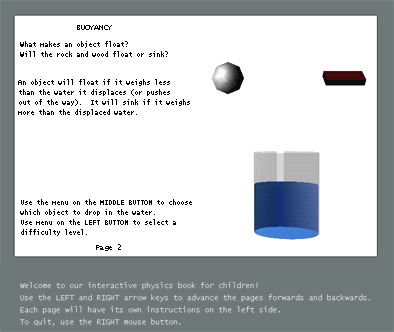 Page
2 dealt with buoyancy. The kid was asked to try to determine what
objects weighed more or less than water, and were given a stone
and a piece of wood.
Page
2 dealt with buoyancy. The kid was asked to try to determine what
objects weighed more or less than water, and were given a stone
and a piece of wood.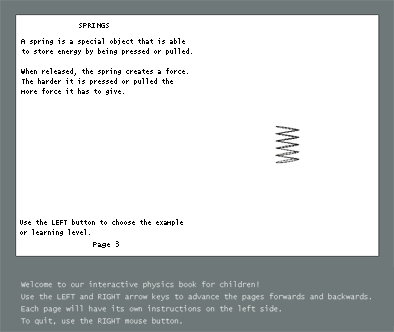 The
final page dealt with springs. This page had two different demonstrations.
The
final page dealt with springs. This page had two different demonstrations. 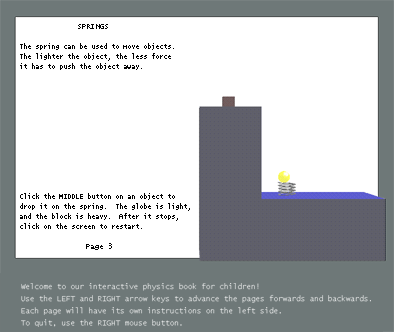 The
second mode allowed students to choose one of two objects to
drop on the spring and predict what happened when the object
weighed a little or a lot.
The
second mode allowed students to choose one of two objects to
drop on the spring and predict what happened when the object
weighed a little or a lot.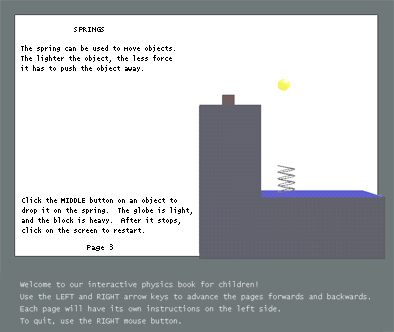 The
sphere was a 'light' object and would depress the spring only
partially but would rebound extremely high, the stone square
only rebound
a short bit, but depressed the spring the entire way.
The
sphere was a 'light' object and would depress the spring only
partially but would rebound extremely high, the stone square
only rebound
a short bit, but depressed the spring the entire way.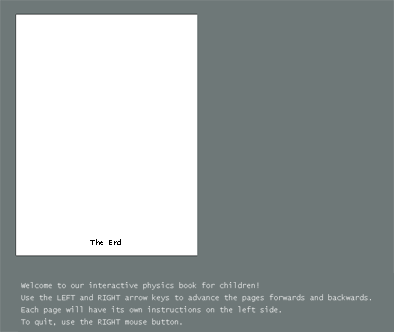 The
final page.
The
final page.